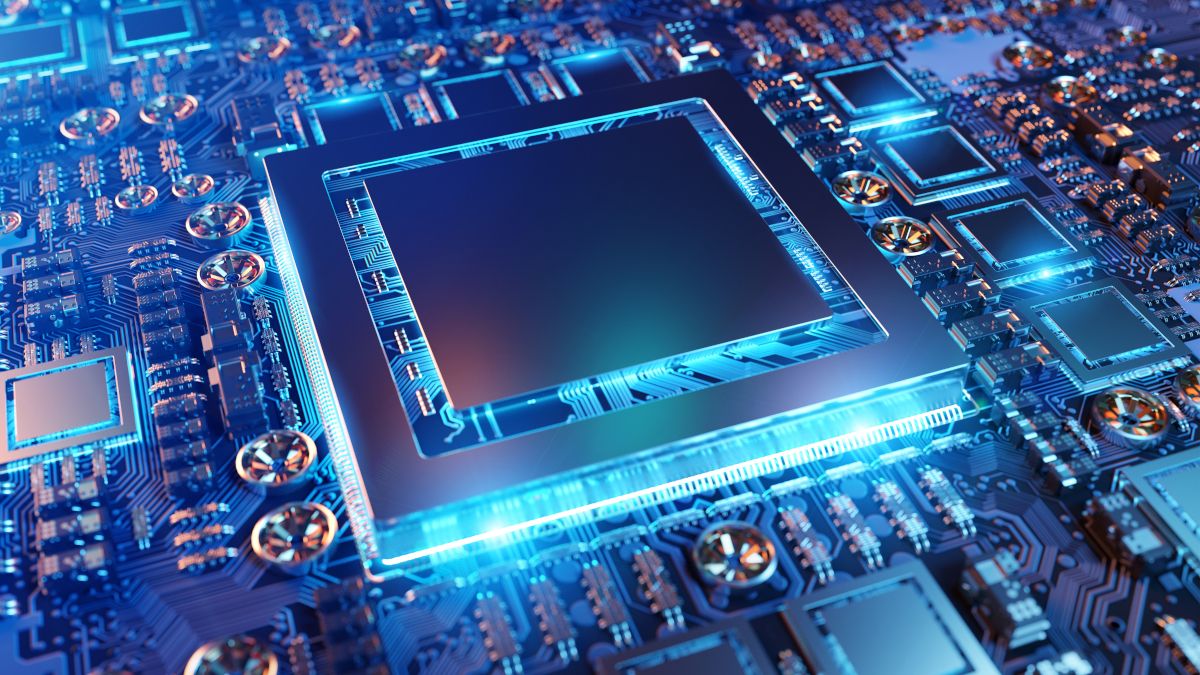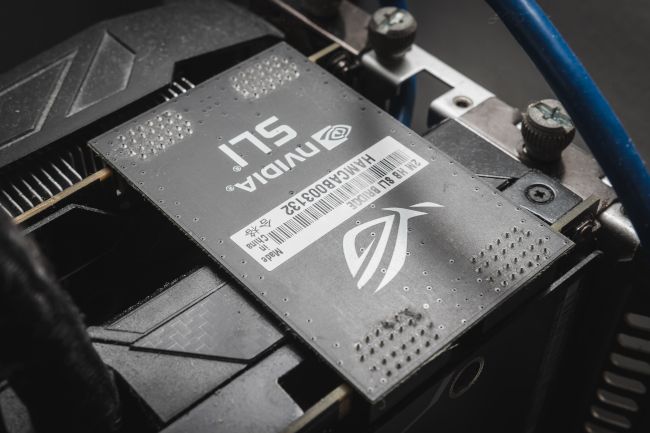Quick Links
GPUsare monolithic; manufacturers create the entire GPU as one large chip.
It’s becoming harder to create smaller transistors, so the days of massive GPU chips may soon end.
Instead, the future might be with the Multi-Chip Module (MCM).

sdecoret/Shutterstock.com
What Is an MCM GPU?
Theconcept of an MCM GPUis simple.
This allows the modules to speak to each other as if they were part of a monolithic GPU.

Nvidia
Making smaller GPU modules and binding them together is advantageous over the monolithic approach.
This could lead to cheaper GPUs and make performance scaling much easier.
If you want a faster graphics card, just add more modules!

KenSoftTH/Shutterstock.com
Does Anyone Remember SLI and Crossfire?
The idea of using multiple chips to boost isn’t new.
You may remember a time when the fastest gaming PCs usedmultiple graphics cardsconnected to each other.

Apple
NVIDIA’s solution was known as SLI (Scalable Link Interface), and AMD had Crossfire.
The performance scaling was never perfect, with the second card adding perhaps 50-70% of performance on average.
The main issue was finding a way to split the rendering load between two or more GPUs.
This is a complex task, and both SLI and Crossfire were bandwidth-constrained.
There were also various graphical glitches and performance issues that resulted from this approach.
Micro-stutters were rampant in the heydays of SLI.
MCM GPUs present to software such as games or graphics software as a single monolithic GPU.
Intel has also beencreating chiplet-based products since 2016.
Related:What Is a Chiplet?
Does Apple Silicon Have An MCM GPU?
Consider theApple M1 Ultra, which is literally two M1 Max chips glued together by a high-bandwidth interconnect.
Related:What Is a System on a Chip (SoC)?